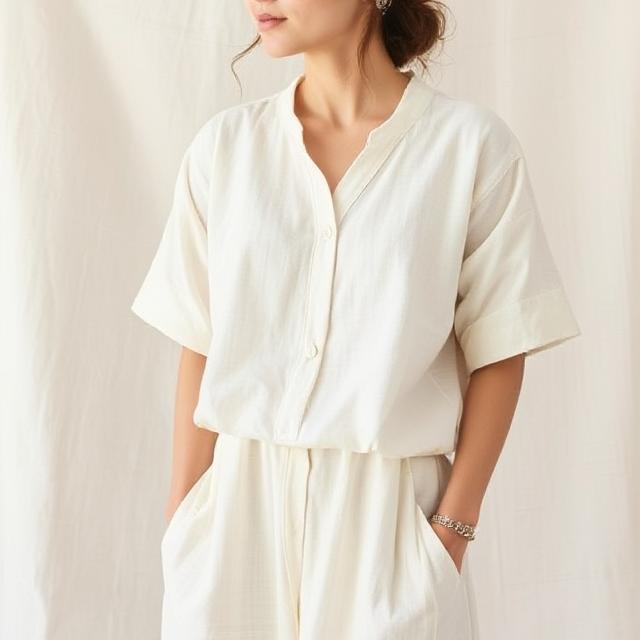As the fashion industry increasingly embraces sustainability, more eco-conscious choices are becoming available to help create a more environmentally-friendly wardrobe. The “Saskia” approach to fashion focuses on utilizing sustainable materials that not only help preserve the environment but also ensure that style and comfort aren’t compromised. Whether you’re an eco-fashion enthusiast or just starting to explore sustainable options, understanding which fabrics and materials contribute to a greener wardrobe is crucial. In this article, we’ll explore 10 Saskia fashion materials that can help you build a stylish and sustainable closet, making choices that are both fashionable and planet-friendly.
1. Organic Cotton
Organic cotton is one of the most popular sustainable materials available in the fashion world. Unlike conventional cotton, which uses harmful pesticides and chemicals, organic cotton is grown without these toxic substances, making it safer for both the environment and the people who work with it. It’s also produced with water conservation in mind, using less water than traditional cotton farming. Organic cotton is soft, breathable, and perfect for everyday wear, from casual T-shirts to comfortable dresses. It provides a sustainable alternative to the standard cotton fabric, offering durability and comfort without the environmental cost.

2. Tencel (Lyocell)
Tencel, also known as Lyocell, is a sustainable fabric made from wood pulp, typically sourced from sustainably managed forests. The production of Tencel is environmentally friendly because it uses a closed-loop system, where almost all chemicals and water used are recycled, minimizing waste. The fabric is biodegradable, soft, and breathable, making it a popular choice for a range of
, from flowy dresses to sleek shirts. Tencel is also naturally moisture-wicking and anti-bacterial, which makes it comfortable and practical for both hot and cold weather.

3. Hemp
Recycled polyester is made from post-consumer plastic bottles or discarded textiles, giving new life to waste materials. It reduces the need for virgin polyester, which is derived from petroleum and contributes to pollution. Recycled polyester is just as durable and versatile as its virgin counterpart, and it can be used to create everything from activewear to outerwear. By choosing garments made from recycled polyester, you’re helping reduce plastic waste and keeping harmful materials out of landfills.

4. Recycled Polyester
Recycled polyester is made from post-consumer plastic bottles or discarded textiles, giving new life to waste materials. It reduces the need for virgin polyester, which is derived from petroleum and contributes to pollution. Recycled polyester is just as durable and versatile as its virgin counterpart, and it can be used to create everything from activewear to outerwear. By choosing garments made from recycled polyester, you’re helping reduce plastic waste and keeping harmful materials out of landfills. It’s an excellent option for those looking to create a more eco-friendly wardrobe without sacrificing the performance and comfort of their clothes.

5. Piñatex (Pineapple Leather)
Piñatex is a sustainable alternative to leather made from the fibers of pineapple leaves. This innovative material is biodegradable, durable, and lightweight, making it a popular choice for accessories like bags, shoes, and jackets. Piñatex provides an eco-friendly option for consumers looking for vegan leather alternatives, as it offers a similar texture and finish to animal-based leather without the environmental harm. By using leftover agricultural waste, Piñatex helps reduce both textile waste and the need for petroleum-based synthetic materials.

6. Cork Fabric
Cork fabric is made from the bark of cork oak trees, which can be harvested without harming the tree. This material is durable, water-resistant, and incredibly lightweight, making it an ideal sustainable alternative to leather. It has a unique texture that gives it a luxurious and organic feel, and it can be used for bags, shoes, and even clothing. Since cork fabric is a byproduct of sustainable farming practices and does not require additional resources, it is a fantastic option for those who want to maintain a stylish wardrobe while reducing their ecological footprint.

7. Linen
Linen, made from the flax plant, is a natural fiber that has been used for centuries. It’s one of the most sustainable fabrics available, as it requires very little water and no pesticides to grow. Linen is biodegradable, durable, and has a low environmental impact throughout its life cycle. The fabric is breathable and moisture-wicking, making it an excellent choice for summer clothing such as dresses, shirts, and trousers. Linen also becomes softer with each wash, providing long-lasting comfort. Its timeless appeal and sustainability make it a staple material for eco-friendly wardrobes.

8. Wool (Responsible Sourcing)
Wool, when sourced responsibly, is a renewable, biodegradable material that offers excellent insulation and moisture-wicking properties. Wool is perfect for outerwear, sweaters, and socks because it provides warmth without being bulky. However, it’s important to choose wool from ethical sources, where animals are treated humanely and environmental standards are met. Certifications such as the Responsible Wool Standard (RWS) ensure that wool is produced in a sustainable and ethical way. Opting for responsibly sourced wool ensures you’re supporting a more eco-conscious fashion industry.

9. Banana Fiber (Abaca)
Banana fiber, also known as abaca, is made from the pseudostems of banana plants. This fiber is naturally strong, lightweight, and durable, making it ideal for making accessories such as bags, hats, and shoes. It’s biodegradable and requires very little water or chemicals to process, making it a highly sustainable material. Banana fiber has been used for centuries in Southeast Asia, and it’s gaining popularity worldwide for its unique texture and eco-friendly properties. As part of a sustainable wardrobe, banana fiber provides a great alternative to conventional synthetics.

10. Recycled Cotton
Recycled cotton is made by breaking down post-consumer or post-industrial cotton fabric and repurposing it to create new textile products. This process helps reduce cotton waste and the need for virgin cotton, which often requires large amounts of water and pesticides. Recycled cotton can be used in everything from casual wear to high-end fashion and accessories. Not only does recycled cotton reduce waste, but it also requires fewer resources in its production, making it an excellent material for those looking to build a sustainable wardrobe with a lower carbon footprint.

Building a sustainable wardrobe is about making mindful choices and opting for materials that have a lesser environmental impact. The Saskia approach to sustainable fashion emphasizes using eco-friendly materials that not only benefit the planet but also offer comfort, durability, and style. From organic cotton to innovative fabrics like Piñatex and cork, there’s a wide range of sustainable materials that cater to various fashion tastes and preferences. By incorporating these 10 materials into your wardrobe, you can feel confident in your fashion choices while also contributing to a healthier planet. A sustainable wardrobe is not only fashionable but also a responsible way to embrace the future of fashion.


